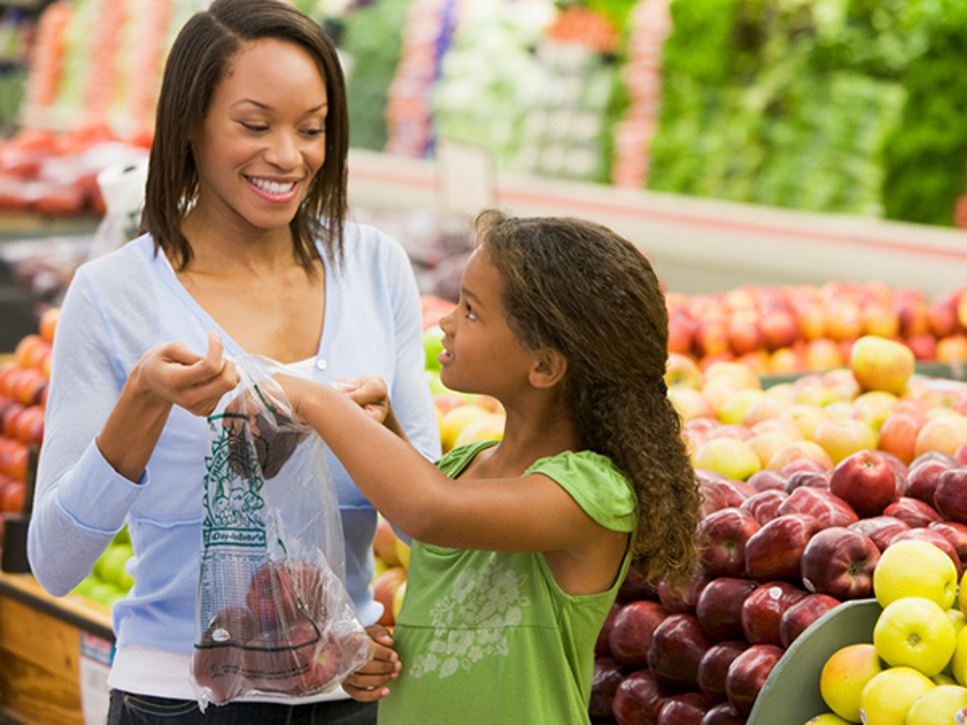Do you struggle to get your child to eat fruits and vegetables? If so, you are not alone.
Research published in the Journal of the Academy of Nutrition and Dietetics revealed that the majority of children in the U.S. don't meet the daily recommended intake of 2½ cups of vegetables and 1½ to 2 cups of fruit. Many children are picky eaters, and a study in the Journal of the American Academy of Child and Adolescent Psychiatry found that picky eaters tend to avoid vegetables.
Food offers a world of experiences well suited to how children learn. Because food can become a hands-on activity, everyday tasks can get kids involved in food, which can help promote healthful eating. Try some of these simple ways to explore fruits and vegetables with young children!
Let Your Child Explore
Plan a fun trip to a grocery store or farmers market with your child. Allowing children to have a say in what produce is picked can be helpful in encouraging them to eat it once you are home. Here are a few creative activities to try.
- Beforehand, give your child cookbooks or cooking magazines and have them look for recipes they would like to try. For older children, you can even ask them to help plan a meal.
- While shopping, allow them to pick out their favorite apples, broccoli or whichever produce interests them.
- As you walk the store aisles, encourage children to name the fruits and vegetables in the produce, canned food or frozen food aisle, or to say the colors of foods they know.
- Find foods that are new to them; talk about their color, shape, size and feel.
- Take advantage of food samples when you are at the store to taste-test new foods.
- Use the experience to sharpen math skills. If oranges are four for a dollar, how much does it cost to buy six?
Let Children Choose
Once children have explored all the produce, let them choose a vegetable or fruit to take home and try. Discuss how they would like it prepared. Younger children can bag up the produce, and older children can weigh it and calculate the cost. Challenge them to put one item of each color in the cart: white cauliflower, blue blueberries, orange carrots, green spinach, etc.
Try Growing Your Own Produce
Growing your own foods from seeds in your garden can be a rewarding experience. Perhaps start the seeds in paper cups on your windowsill. Kids enjoy eating foods they grow themselves — and it's a great science lesson!
Your Child Can Help At Home Too!
At home, as you take vegetables out of grocery bags, talk about on which part of the plant each one grows: leaf (cabbage, lettuce, greens), roots (carrot, potato), stalk (celery, asparagus), flower (broccoli, cauliflower, artichoke) and seed (peas, corn). Kids are more likely to try a food that they have a hand in choosing and preparing. Children love to help! Depending on their age and skill level, children can participate in various meal preparation tasks such as:
- Washing vegetables
- Rinsing berries
- Tearing lettuce
- Slicing fruits and vegetables
- Cooking with the microwave oven
- Putting bread in a basket
Explore Beyond Your Kitchen
Take your food exploration beyond your kitchen and local grocery store by reading books about food to children. Ask a librarian, teacher or head of the children's book department in a store to suggest titles and prepare some foods from the stories.
Find a Nutrition Expert
Looking for credible nutrition information and recommendations? The Academy of Nutrition and Dietetics' network of credentialed food and nutrition practitioners are ready to help!

